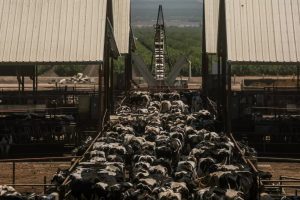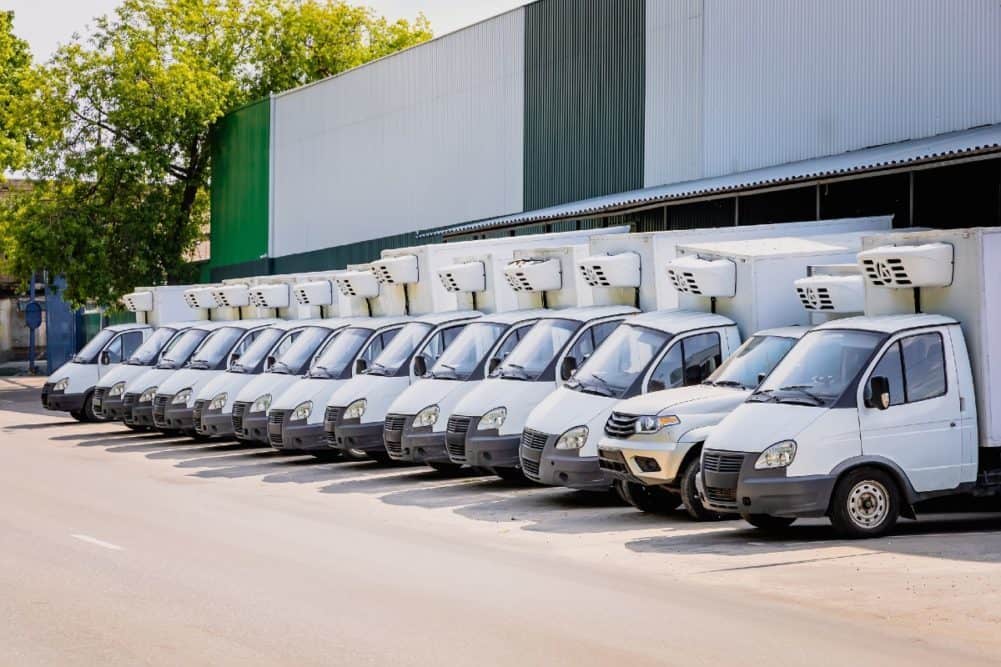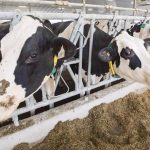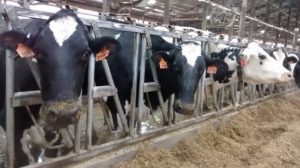
There is no disputing COVID-19 created significant disruption to global supply chains.
Making the food supply chain more resilient is essential to ensure that dairy products remain accessible and reliable, even in the face of disruptions such as natural disasters, pandemics or other unexpected events. Companies can reinforce their supply chain by reconsidering outdated, short-term strategies and beginning the hard work of building structural resilience.
“I think there’s all these downstream effects that people don’t think about,” said Becky Rasdall, vice president of trade policy and international affairs, the International Dairy Foods Association, Washington, DC. “There’s all ranges of down chain effects that we saw across our membership that were a result of primarily transportation issues that ended up affecting their businesses and restructuring the way they thought about doing business.”
Stronger transportations logistics
Transportation was one of the biggest woes the industry faced over the past several years. Many processors were faced with potentially not being able to fulfill contracts because of delays in deliveries and losing customers as a result. Not only would that leave companies to find new customers, but also to ensure product had someplace to go, Rasdall said.
Some of those issues are being addressed with the Ocean Shipping Reform Act being implemented by the Federal Maritime Commission. Rasdall said those types of policy-level initiatives that are intended to be long-term solutions are part of the ongoing discussions surrounding the supply chain.
“They’re still working on the rules and initiatives to implement (the Ocean Shipping Reform Act), and essentially make sure that we don’t ever have a situation where ocean carriers just aren’t picking up our goods again,” she said. “But having appropriate rules in place for position carriers is much, much better informed by our processors providing them input on what they experienced and what they need to do moving forward in order to get their exports out the door.”
Domestically, ongoing labor issues in the trucking industry have caused numerous problems for processors moving their products. Rasdall said advocacy of workforce solutions, including immigration reform, is essential in tackling the problem.
“We’re absolutely not giving up the fact that we need more drivers, and we need more workforce solutions – whether that’s in the plant, in a warehouse, in a truck – we 100% continue to advocate for immigration reform that would allow for more workers in all of those areas,” she said. “But I think we also try to support any creative initiatives that this administration has come up with, like getting a pilot program in place to help young truck drivers go straight into their truck driver training and apprenticeships at the age of 18 instead of having to wait until they’re 21 or making sure that those who are seeking their CDL can have flexibilities like interstate testing and things like that. So anything we can do at any creative angle to make it easier to become a driver – and become a driver younger.”
Other potential transportation solutions include developing contingency plans for transportation disruptions, including alternative routes and modes of transportation and collaborating with logistics providers to ensure flexible and efficient delivery options.
Some companies have reengineered their pallet design and packaging designs to lower the weight of their product in order to fit more on a truck. Additionally, increasing gross vehicle weight limits at the federal level could help get more product on a truck and use fewer trucks on the road. “In dairy, we tend to weigh out a truck before you fill it up, so the weight limit placed on a truck really, really matters,” Rasdall said.
Utilizing technology
Investments in technology are happening across the industry at a breakneck pace. Utilizing technology such as sensors and data analytics can improve supply chain visibility and traceability, while forecasting and demand planning tools anticipate fluctuations in demand and supply.
Data is a powerful tool in supply chain management, as is data transparency as a part of supplier partnerships in order to monitor supply chain performance and assess vulnerabilities.
“If we can track our luggage when we fly, why can’t we track more easily than we currently are able to our goods when they’re moving across the road or across the water?” Rasdall said. “There’s some solutions in place for that, but they’re not consistent. And depending on who your transportation carrier might be, they might not want to share that information with you once they take possession of it, even though you’re the one that’s bound to the customer at the other end.”
According to McKinsey & Company, a global management consulting firm, one way to minimize risk when sharing data is to consider terms that require the disclosure of data under specific conditions. Even if data sharing is restricted, companies may be able to have clean teams share data with a third-party firm that analyzes the supply chain for weaknesses and provides recommendations.
“I think there’s a lot of room for growth and in the transparency of data – where the goods are, what their disposition is, how they’re getting there, when they’re getting there,” Rasdall said. “That’s something that thankfully the government is really supporting – the Department of Transportation, the White House Federal Maritime Commission – but there’s a lot that can only happen if we’re jumping in and providing our own perspective of what we’ve experienced and what we need to see moving forward.”
Constructing a “digital twin” of the most critical parts of a supply chain can also be a valuable tool, according to McKinsey. A digital twin is a virtual replica of a business’s operation that allows companies to simulate how a product, process or service will perform before it is implemented in the real world.
The rise of e-commerce
Retailers whose online sales increased during the COVID-19 pandemic also experienced pressure on supply chains.
“I think everybody knows that over the past few years during COVID, e-commerce grew exponentially,” said Shelly Nirvelli, vice president, business development – packaging solutions for North America, DHL Supply Chain, Westerville, Ohio, during a presentation at Pack Expo Las Vegas in September. “We weren’t expecting it. And we weren’t sure if those levels were going to stay as high as they were. But what we are actually seeing is that e-commerce levels have actually stayed fairly high. And because of that, we really had to be able to adjust the packaging supply chain to be able to account for that.”
An e-commerce format is something that increased and is expected to continue to increase over time, Nirvelli said.
“We do not expect levels to come way down,” she said. “We really had to make some adjustments to ensure that we can incorporate e-commerce into the normal business operations, because it’s become so relevant to the industry as well.”
Enhancing the resilience of the food supply chain is an ongoing process that requires collaboration between suppliers and stakeholders, investment in infrastructure and technology, and a proactive approach to identifying and mitigating risks.
“One thing that seems obvious from feedback from members’ ‘lessons learned’ would be to just demand good business practices from those you’re partnering with in the supply chain,” Rasdall said. “There’s a lot of ongoing longer-term initiatives aimed at keeping this situation from repeating that can be joined at a broader level that’s across the whole supply chain.”























